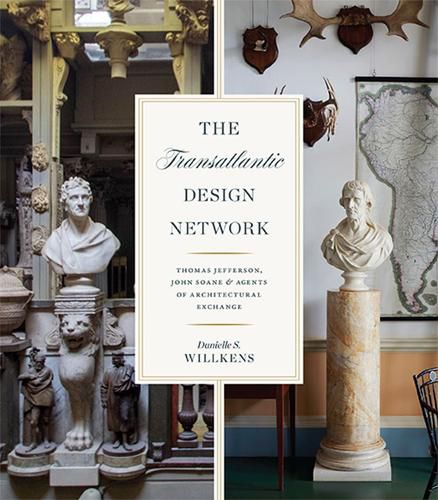Readings Newsletter
Become a Readings Member to make your shopping experience even easier.
Sign in or sign up for free!
You’re not far away from qualifying for FREE standard shipping within Australia
You’ve qualified for FREE standard shipping within Australia
The cart is loading…






Tracing the mutual influence of great architects of the eighteenth century on both sides of the Atlantic
Although a good deal has been written about the voluminous intellectual exchange between Europe and the Americas in the eighteenth century across various humane disciplines, no study to date has focused on architectural culture, despite the fact that numerous Europeans made their way across the Atlantic to design some of America's most important buildings. In this groundbreaking work, Danielle Willkens authoritatively fills that gap, defining and expounding the "transatlantic design network" of mainly British and American individuals that included Thomas Jefferson, the architect John Soane, and Maria Cosway, an acclaimed painter, musician, composer, and educator who maintained a lifelong correspondence with both Jefferson and Soane.
Willkens places Jefferson's and Soane's famous homes in a historical and aesthetic context that extends beyond their respective renown as national shrines. She shows how, contrary to their reputations, neither represents the product of a singular architectural vision. The contributions of other architects, designers, philosophers, and friends have been effectively effaced from both Monticello and the Soane House. Willkens here corrects the record, mapping the influence of this crucial hidden network on architecture and aesthetics on both sides of the Atlantic.
$9.00 standard shipping within Australia
FREE standard shipping within Australia for orders over $100.00
Express & International shipping calculated at checkout
Tracing the mutual influence of great architects of the eighteenth century on both sides of the Atlantic
Although a good deal has been written about the voluminous intellectual exchange between Europe and the Americas in the eighteenth century across various humane disciplines, no study to date has focused on architectural culture, despite the fact that numerous Europeans made their way across the Atlantic to design some of America's most important buildings. In this groundbreaking work, Danielle Willkens authoritatively fills that gap, defining and expounding the "transatlantic design network" of mainly British and American individuals that included Thomas Jefferson, the architect John Soane, and Maria Cosway, an acclaimed painter, musician, composer, and educator who maintained a lifelong correspondence with both Jefferson and Soane.
Willkens places Jefferson's and Soane's famous homes in a historical and aesthetic context that extends beyond their respective renown as national shrines. She shows how, contrary to their reputations, neither represents the product of a singular architectural vision. The contributions of other architects, designers, philosophers, and friends have been effectively effaced from both Monticello and the Soane House. Willkens here corrects the record, mapping the influence of this crucial hidden network on architecture and aesthetics on both sides of the Atlantic.